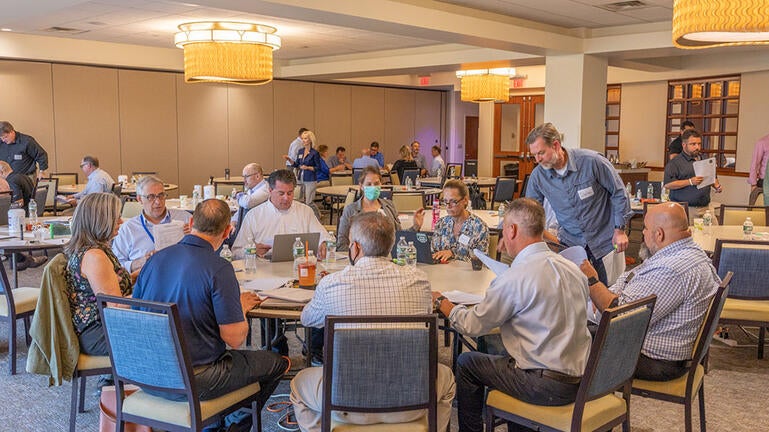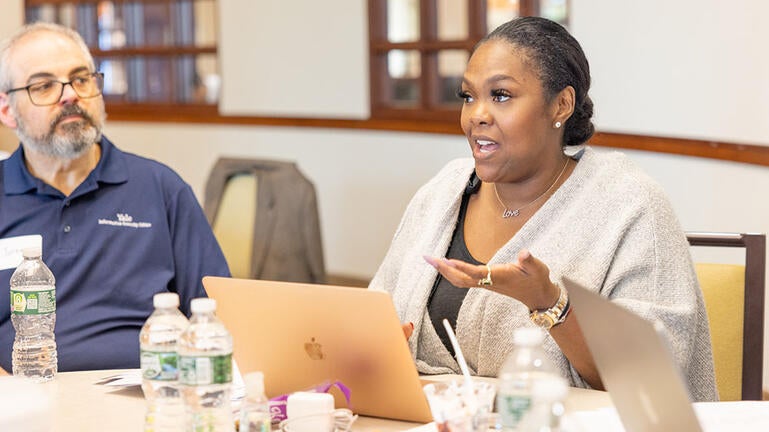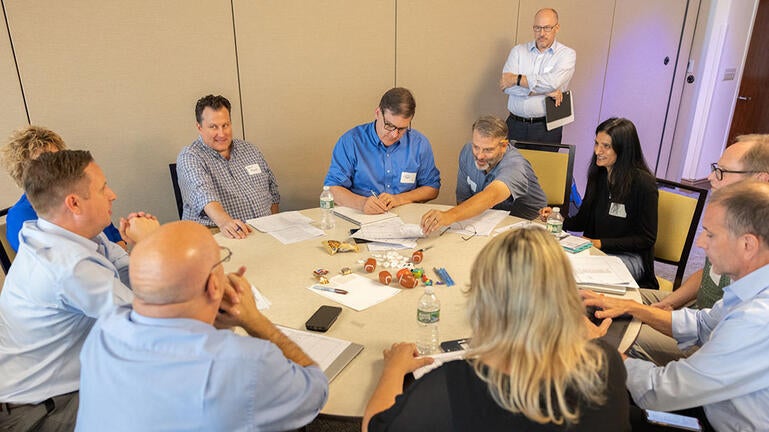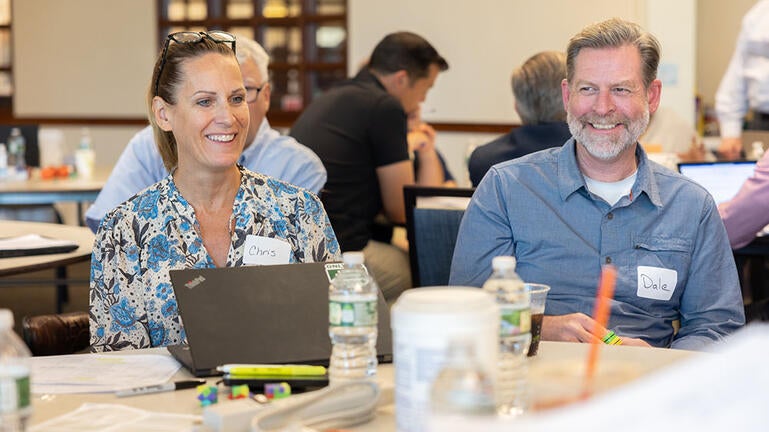Resetting IT’s Strategy for Fiscal Year 2023-2027
August 11, 2022





In preparation for the end of the FY18-FY22 IT strategy, IT leaders have been busily recalibrating for the next five years. Through a combination of meetings with individuals across the University, a campus-wide survey, insights from the IT Leadership Council, and a retreat with IT Staff, strategic anchors and associated goals have emerged. The working FY23-FY27 IT strategy will support Yale’s evolving technology needs and the staff who deliver on those needs.
Starting with the January 27 and May 3 Town Halls, IT leaders thanked staff for a successful five years and indicated that work was underway for a new five-year strategy. Among those updates, John Barden shared information about conversations held in November 2021 with approximately 100 leaders and faculty members across campus to collect feedback on progress, identify opportunities ahead, and gain a sense of how the community expectations surrounding technology might be shifting. Much of that feedback was shared during IT Leadership Team meetings, including a recap in our June 29 article.
In February, IT completed a campus-wide MISO survey in partnership with the Yale Libraries to formally collect rich feedback from faculty, staff, and students. A summary of survey results is available on Power BI.
During May and June, the ITS Senior Leadership Team and the IT Leadership Council partnered to update the IT Strategic Plan. Their collaboration on this strategy is new, reflecting a much greater evolving partnership and desire to work collaboratively on evolving our IT practices across the institution. On July 14, this group extended that partnership to all ITS Leadership Team members and many direct reports of the IT Leadership Council. About 60 staff gathered during this planning session, focused on refining the preliminary strategy and planning around associated goals. John Barden remarked that “the depth of engagement and thought leadership by all IT leaders at Yale has been impressive to watch. There is tremendous enthusiasm for the opportunities ahead and a strong recognition that the next stages of evolution for IT at Yale rely upon the effective coordination of work across our many IT organizations”. While still in draft and subject to some continuing refinement by the ITS Senior Leadership team and IT Leadership Council, the core planning elements have been defined.
Additionally, at the July 14 session, IT’s mission statement was reviewed and ratified by the broader group. It remains unchanged from 2018 (“To enable the mission of Yale and expand the realm of possibility”) and reflects the ongoing expectation of a mission-focused role, supporting academic delivery, clinical care, research, and cultural heritage. It also reminds us of the importance of innovation and visibility within our community, aligning to the evolving capabilities of technology and the IT team, understanding the broader marketplace, and learning how other organizations are leveraging emerging technology to support missions like our own.
The group also reviewed the strategic anchors we have used to guide ITS work since 2018. While the anchors will remain the same, the definitions are updated to reflect our broader engagement and evolving aspirations. At the session on July 14, more than 20 potential goals were defined. The ITS Senior Leadership team and IT Leadership Council have subsequently prioritized and outlined approximately 10 priorities for the remainder of the 2023 fiscal year, with the remainder under consideration for FY24 and beyond.
The anchors and preliminary goals for FY23 include:
- One IT at Yale - defined as “Align to seamlessly enable institutional goals”. The emphasis of this statement is on continuing to evolve our governance methods to ensure we are in lockstep with institutional leaders and continue to work on the interconnections between our IT teams in the service of our campus community. For the first year of the strategy, emphasis will be on developing a roadmap for integrated support coordination across all IT units, piloting an integrated IT services catalog, and conducting an integrated IT plan review for FY24.
- Service Quality – defined as “Consistently deliver against evolving institutional needs.” The emphasis of this statement underscores the rapidly changing reliance on our team to support the work of the institution every day. Demand is enormously high, and our service quality must match our community’s expectations and rapidly evolve as technology expectations evolve. In the first year, we will likely focus on improving the clarity of expectations using Service Level Agreements (SLAs) built in FY21 and FY22, establishing practices to support more innovation and risk-tolerant culture, and strengthening mechanisms for targeted IT support messaging.
- Workplace of Choice – defined as “An engaging environment that empowers, equips, and includes everyone.” Here, the team has emphasized the importance of assuring our culture and practices promote feelings of connection, support, and the capability to do your very best work. Initial goals include extending the IT Job Family redesign to several distributed IT units, piloting a university-wide IT team mentoring program, and improving team communications to help IT staff feel more connected to the missions and community of Yale.
Team members should become familiar with these anchors and preliminary goals and discuss them with their managers in upcoming one-on-one or team meetings. In September, teams will begin to align their own work with each of these goals. If you have questions about our evolving priorities, discuss them with your leadership team members, or send questions via “Ask John.”


